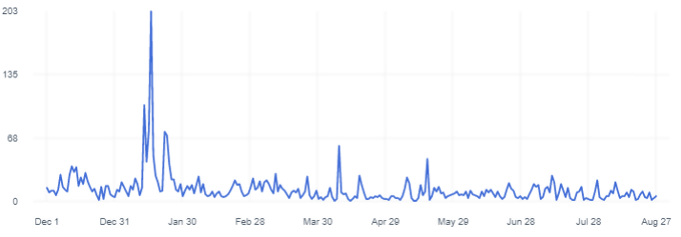Great Practices of Website Redesign for Better SEO

Source – SEJ
“Since we’ve launched our redesigned website, our SEO rankings dramatically dropped.”
Unfortunately, this is not an uncommon issue for the companies that invest in a website redesign.
Companies invest a lot of money and time into creating the best version of their website that they could possibly afford. The intent behind it is clear: a company’s website represents their image on the Internet.
But once the website has been launched, your best intentions can play a joke on you and your usual traffic can suddenly drop. For B2B companies that often don’t receive a lot of traffic due to their frequent connection to a specific industry, losing even 10% of website traffic can be problematic.
Here’s an example. A B2B company, working with manufacturing sites and supplying them with tracking devices, redesigned a website in January 2018 (the name of the company is not to be disclosed):

From this graph, you can see, how drastically website traffic decreased since the website redesign.
Unfortunately, this is a common issue, which, however, can be prevented if you take into account the potential causes of a decrease in traffic. These causes include but are not limited to:
- Change in URL
- New content
- New sections and pages
- New technology
- Structure of internal links
- Change in the domain name
- Change in the protocol (HTTP to HTTPS)
So, before the redesign, you should equip yourself with a strategy that will make the transition from your old website to a newer version. Here’s the checklist of website redesign practices that will help you preserve your rankings and avoid SEO-related issues:
301 redirects.
This is the first and most important task on your list. 301 redirects are permanent redirects preserving up to 99% link equity. This is a method that presupposes keeping content on the same URLs during a website redesign.
Some CMS platforms allow you to redirect content safely with retaining all the internal and external links. For instance, WordPress allows you to redesign your pages while maintaining the same permalink structure. If you don’t use CMS that offer this feature, it is recommended to keep the old website for a while before you switch it off to check if all links work correctly.
Content optimization.
Last year, Google released the list of requirements to the quality of the content and gave the definition of low-quality content that has the following features:
- Lack of EAT qualities (expertise, authoritativeness, trustworthiness)
- Lack of the purpose of the page
- There are issues with website maintenance
- Content includes broken links and other low-quality content or content that is not functioning (low-quality images or videos)
The latter is a common occurrence during website redesign and has a negative impact on SEO. Launching a new website presupposes running content quality tests before you switch from your old website. It is important to check the volume of content as well as the resolution and quality of videos and images (if included). CMS platforms often create a media archive that allows you to update content. If not, run a quick background, creating copies of content from your website, to ensure that you have everything at hand to optimize the content on your new website.
Updating internal links and backlinks.
Broken internal links are also a common occurrence during a website redesign. If you have a blog on your website, in which you often reference your previous posts, there’s a chance that due to changed domain and URLs, your internal links might need an update.
The same thing can happen if you create several versions of your website in different languages, but still, give the link to your main blog page. Broken internal links were among the problems for Flatfy, an international real estate company when they launched their multilingual website versions. A trial website test has shown that all articles on their blog had broken internal links, which led to postponing the launch of the updated website.
Broken internal links are not the only concern. Lower rankings and bad SEO results can be also caused by invalid or broken backlinks that you reference to support the credibility of your content.
If you use CMS like WordPress for your website, there are many SEO plugins that, besides optimizing SEO, check the quality of your internal links and backlinks.
However, it is important to run the check via these plugins before the website launch. Otherwise, you’ll have to put the website on maintenance again to fix the problem.
Final Suggestion
If you own a B2B company and about to launch your redesigned website, you can notify Google about upcoming changes to maintain your traffic. Google offers Webmasters Tools that include the Change of Address tool, which save the changes to your domain for 180 days. After this, the changes to your website must be indexed. Essentially, you’ll have an extra 180 days to make any changes to your website without losing traffic.
No matter, what option you choose, maintaining SEO services and preserving traffic should be a strategy developed prior to website redesign and launch. Once you incorporate these practices, your website redesign should run more smoothly.
Author Bio
Ryan is a passionate writer who likes sharing his thoughts and experience with the readers. Currently, he works as a real estate agent, you can check his website here. He likes everything related to traveling and new countries.

